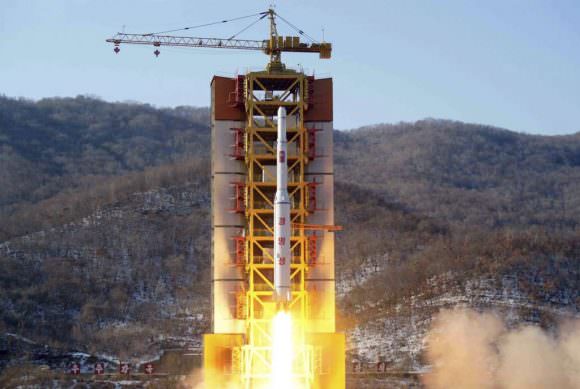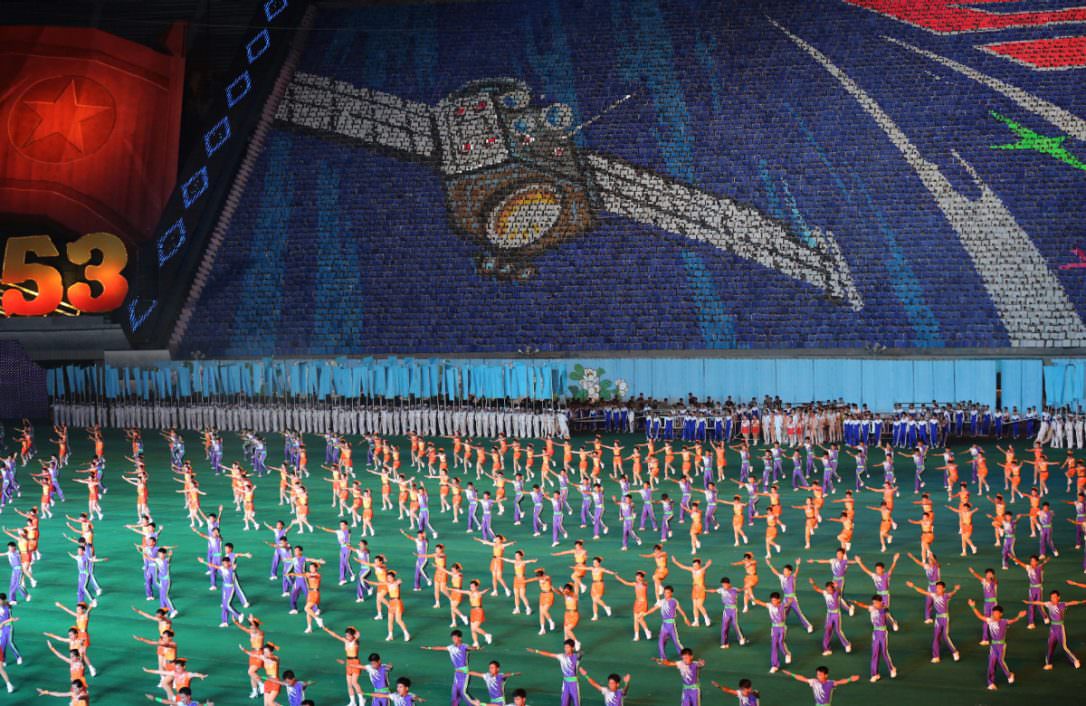Space exploration was once considered the province of two superpowers, with only tertiary participation from other nations. But since the turn of the century, more and more nations are joining in. China and India, for example, have placed landers on the Moon, satellites around Mars, and are even working on a space station. And as if that weren’t enough, private industry is also making its presence felt, largely through SpaceX and Blue Origins‘ development of reusable rockets.
But in the latest announcement to come out of the world’s last Stalinist regime, it seems that North Korea also hopes to join the 100 mile-high club (the space race, not the other thing!) In a recent interview with the Associated Press, a North Korean official indicated that the country is busy working on a five year plan that will put more satellites into orbit by 2020, and mount a mission to the moon within 10 years time.
According to the official – Hyon Kwang Il, the director of the scientific research department of North Korea’s National Aerospace Development Administration – the 5-year plan is focused on the deployment of more Earth observations satellites, as well as what will be the country’s first geostationary communications satellite.

He further indicated that universities in North Korea are expanding their programs to train rocket scientists, with the ultimate purpose of mounting an unmanned Moon mission sometime in the 2020s. If this statement is to be believed, then this plan would constitute significant steps being taken by the isolated regime to establish a foothold in space.
As Hyon indicated in an interview with AP on July 28th, this will all be taking place despite the ongoing embargo and attempts to stifle North Korea’s technological ambitions:
“Even though the U.S. and its allies try to block our space development, our aerospace scientists will conquer space and definitely plant the flag of the DPRK on the moon… We are planning to develop the Earth observation satellites and to solve communications problems by developing geostationary satellites. All of this work will be the basis for the flight to the moon.”
Considering the announcements to come out of this isolated, totalitarian state in the past – i.e. having a cure for HIV, Ebola and cancer, finding a unicorn lair, and having invisible phones – you might be asking yourself, “how seriously should I take this?” The answer: with cautious skepticism. Granted, North Korea’s state-controlled media frequently releases propaganda statements that are so outlandish that they make us laugh out loud.
Still, this latest claim does not seem so farfetched. Already, North Korea has deployed two Earth observation satellites as part of its Kwangmyongsong program, which began in earnest in 1998. Back in February, the fifth satellite in this program (Kwangmyongsong-5) was successfully launched into orbit. And while this was only the second successful launch, it does show that country is developing a certain degree of competency when it comes to space technology.

The Unha rockets that were used to deliver the satellites into orbit are also considered to be capable. An expandable carrier rocket, the Unha relies on a delivery system that is similar to the Taepodong-2 long-range ballistic missile (which is a modified version of the Russian Scud). What’s more, recent satellite images of the Sohae Satellite Launching Station (located in the northeastern North Pyongan Province) has revealed that an enlarged launch tower is under construction.
This could be an indication that an enlarged version (Unha-X) might be under development, which is consistent with propaganda posters that are also advertising the new rocket. And this past Wednesday, the country test-fired what was believed to be a medium-range ballistic missile into the seas off Japan, which is the fourth reported weapons launch to take place in the past two weeks. Clearly, the regime is working to develop its rocket capabilities, which is essential to any space program.
Beyond that, the success other nations have had in recent years conducting unmanned mission to the Moon – like China’s Chang’e program – could serve as an indication that the North Korean regime is entirely serious about planting a flag there as well. “Our country has started to accomplish our plan and we have started to gain a lot of successes,” said Hyon. “No matter what anyone thinks, our country will launch more satellites.”
Seriousness or not, whether or not North Korea can actually achieve their more ambitious goal of reaching the Moon in a decade remains to be seen. And it will only come with a whole lot of time, effort, and the country burning through another significant chunk of its GDP (as with its nuclear tests). In the meantime, we better get used to the idea of Low-Earth Orbit getting a bit more crowded!
And in the meantime, be sure to enjoy this video from the Onion, which presents what is only a semi-satirical take on the regime’s space plans:
Further Reading: Associated Press


